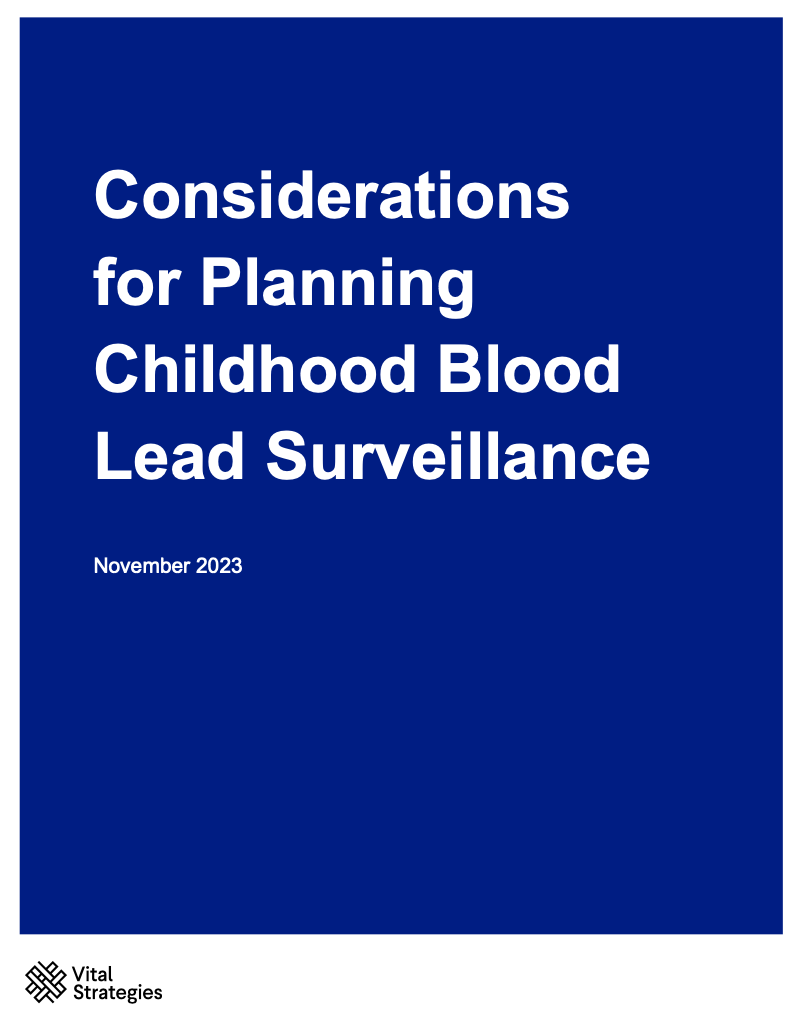Lead is a potent toxin that can severely affect the mental and physical functioning of children and the health of adults. Young children are particularly susceptible to lead poisoning because they absorb far more lead from their environments than adults and because their central nervous systems are still developing. Early detection and prevention of exposure to lead are particularly important as neurological and behavioral impacts due to lead exposure among children are generally irreversible. Blood lead surveillance is an important tool to serve this purpose.
This document is meant to be used as a tool to facilitate discussion with national and local government institutions to explore the most suitable lead surveillance model for a given setting. This document provides an overview of options and considerations for designing a national or regional childhood blood lead surveillance. The ultimate selection of an approach should be based on engagement with a broad group of stakeholders.
Recent Abstracts
The Power of Storytelling: Guidance for the Creation of Testimonials
Lead Poisoning and Early Childhood Development
Prioritizing Evidence Gaps: Air Pollution and Health Impacts of Climate Action
Raising Alcohol Taxes to Reduce Harm: Fact Sheets for Brazil
Risk of mortality by aggression: A retrospective cohort study in women with notification…
How the Alcohol Industry Steers Governments Away From Effective Strategies to Curb Drink…
Analysis of the Efficacy of Alcohol Industry-Sponsored Drink-Driving Campaigns
Messaging Recommendations for Effective Road Safety Campaigns: Lessons From Formative Research for Drink…
Prescribing Psychostimulants for the Treatment of Stimulant Use Disorder: Navigating the Federal Legal…
Enforcement of COTPA in India- current status, challenges and solutions
